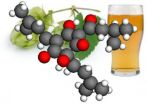(Press-News.org) PORTLAND, Ore. – OHSU researchers, in partnership with scientists from several other institutions, have published two new research papers that signal how the next class of powerful medications may currently reside at the bottom of the ocean. In both cases, the researchers were focused on ocean-based mollusks – a category of animal that includes snails, clams and squid and their bacterial companions.
Sea life studies aid researchers in several ways, including the development of new medications and biofuels. Because many of these ocean animal species have existed in harmony with their bacteria for millions of years, these benign bacteria have devised molecules that can affect body function without side effects and therefore better fight disease.
To generate these discoveries, a research partnership called the Philippine Mollusk Symbiont International Cooperative Biodiversity Group was formed. As the name suggests, the group specifically focuses on mollusks, a large phylum of invertebrate animals, many of which live under the sea. Margo Haygood, Ph.D., an OHSU marine microbiologist, leads the group, with partners at the University of the Philippines, the University of Utah, The Academy of Natural Sciences in Philadelphia and Ocean Genome Legacy. Both of these newly published papers are the result of the efforts of this research group.
Here are brief summaries of the two studies:
Shipworms: The source of a new antibiotic
Published in the current edition of the journal Proceedings of the National Academy of Sciences
The paper focuses on a unique animal called a shipworm, which despite its name is not a worm. Shipworms are mollusks and are clam-like creatures that use their shells as drills and feed on wood by burrowing into the wood fibers. They are best known for affixing themselves to the sides of wooden ships. Over time, their wood feeding causes serious damage to the hull of those ships.
The research team initially focused on shipworms because the animals' creative use of bacteria to convert wood — a poor food source lacking proteins or nitrogen — into a suitable food source where the animal can both live and feed.
This research revealed that one form of bacteria utilized by shipworms secretes a powerful antibiotic, which may hold promise for combatting human diseases.
"The reason why this line of research is so critical is because antibiotic resistance is a serious threat to human health," said Margo Haygood, Ph.D., a member of the OHSU Institute of Environmental Health and a professor of science and engineering in the OHSU School of Medicine.
"Antibiotics have helped humans battle infectious diseases for over 70 years. However, the dangerous organisms these medications were designed to protect us against have adapted due to widespread use. Without a new class of improved antibiotics, older medications are becoming less and less effective and we need to locate new antibiotics to keep these diseases at bay. Bacteria that live in harmony with animals are a promising source. "
Cone snails: Another possible yet surprising source for new medicines
Published in the current edition of the journal Chemistry and Biology
A team led by researchers from the University of Utah, and including OHSU and the University of the Philippines researchers, took part in a separate study of cone snails collected in the Philippines. Cone snails are also mollusks. There have been few previous studies to determine if bacteria associated with these snails might assist in drug development. This is because the snails have thick shells and they can also defend themselves through the use of toxic venoms. Because of the existence of these significant defensive measures, it was assumed that the bacteria they carry do not have to produce additional chemical defenses that might also translate into human medications. The latest research shows that this previous assumption is incorrect.
The research demonstrated how bacteria carried by cone snails produce a chemical that is neuroactive, meaning that it impacts the function of nerve cells, called neurons, in the brain. Such chemicals have promise for treatment of pain.
"Mollusks with external shells, like the cone snail, were previously overlooked in the search for new antibiotics and other medications," said, Eric Schmidt, Ph.D., a biochemist at the university of Utah and lead author of the article.
"This discovery tells us that these animals also produce compounds worth studying. It's hoped that these studies may also provide us with valuable knowledge that will help us combat disease."
### About the Philippine Mollusk Symbiont International Cooperative Biodiversity Group
The Philippine Mollusk Symbiont International Cooperative Biodiversity Group links a biodiversity survey of marine mollusks with enzyme and drug discovery aimed at bacterial symbionts of mollusks. Mollusks constitute the most diverse marine life groups, occupying virtually every possible ecological niche. The diversity of microbes associated with mollusks is equally vast.
The group focuses on training, conservation, and the development of drug discovery and biofuels programs within the Philippines. The project is led by Margo Haygood, marine microbiologist, Oregon Heath & Science University, in association with Gisela Concepcion, marine natural products chemist, Marine Science Institute, University of the Philippines; Baldomero Olivera, biochemist, and Eric Schmidt, natural products chemist and biochemist, both at the University of Utah; Gary Rosenberg, evolutionary biologist, Academy of Natural Sciences in Philadelphia; and Daniel Distel, marine microbiologist, Ocean Genome Legacy.
About OHSU
Oregon Health & Science University is a nationally prominent research university and Oregon's only public academic health center. It serves patients throughout the region with a Level 1 trauma center and nationally recognized Doernbecher Children's Hospital. OHSU operates dental, medical, nursing and pharmacy schools that rank high both in research funding and in meeting the university's social mission. OHSU's Knight Cancer Institute helped pioneer personalized medicine through a discovery that identified how to shut down cells that enable cancer to grow without harming healthy ones. OHSU Brain Institute scientists are nationally recognized for discoveries that have led to a better understanding of Alzheimer's disease and new treatments for Parkinson's disease, multiple sclerosis and stroke. OHSU's Casey Eye Institute is a global leader in ophthalmic imaging, and in clinical trials related to eye disease.
Tomorrow's life-saving medications may currently be living at the bottom of the sea
2013-01-29
ELSE PRESS RELEASES FROM THIS DATE:
Beer's bitter compounds could help brew new medicines
2013-01-29
Researchers employing a century-old observational technique have determined the precise configuration of humulones, substances derived from hops that give beer its distinctive flavor.
That might not sound like a big deal to the average brewmaster, but the findings overturn results reported in scientific literature in the last 40 years and could lead to new pharmaceuticals to treat diabetes, some types of cancer and other maladies.
"Now that we have the right results, what happens to the bitter hops in the beer-brewing process makes a lot more sense," said Werner ...
Annals of Internal Medicine early release article for Jan. 29, 2013
2013-01-29
Philadelphia, January 29, 2012 – The Center for Disease Control and Prevention's Advisory Committee on Immunization Practices (ACIP) announced its recommended 2013 adult immunization schedule that includes important updates to the pneumococcal, Tdap (tetanus, diphtheria, and acellular pertussis), and influenza vaccines. Because current vaccination rates are low, ACIP also urges health care providers to regularly assess patient vaccination histories and implement intervention strategies to increase adherence. This recommendation will be published in Annals of Internal Medicine, ...
Study finds significant microorganism populations in middle and upper troposphere
2013-01-29
In what is believed to be the first study of its kind, researchers used genomic techniques to document the presence of significant numbers of living microorganisms – principally bacteria – in the middle and upper troposphere, that section of the atmosphere approximately four to six miles above the Earth's surface.
Whether the microorganisms routinely inhabit this portion of the atmosphere – perhaps living on carbon compounds also found there – or whether they were simply lofted there from the Earth's surface isn't yet known. The finding is of interest to atmospheric scientists, ...
New research uncovers the neural mechanism underlying drug cravings
2013-01-29
Addiction may result from abnormal brain circuitry in the frontal cortex, the part of the brain that controls decision-making. Researchers from the RIKEN Center for Molecular Imaging Science in Japan collaborating with colleagues from the Montreal Neurological Institute of McGill University in Canada report today that the lateral and orbital regions of the frontal cortex interact during the response to a drug-related cue and that aberrant interaction between the two frontal regions may underlie addiction. Their results are published today in the journal Proceedings of ...
Hospital patient loads often at unsafe levels, physician survey says
2013-01-29
Nationwide, more than one-quarter of hospital-based general practitioners who take over for patients' primary care doctors to manage inpatient care say their average patient load exceeds safe levels multiple times per month, according to a new Johns Hopkins study. Moreover, the study found that one in five of these physicians, known as hospitalists, reports that their workload puts patients at risk for serious complications, or even death.
The research, reported in JAMA Internal Medicine, comes as health care systems anticipate an influx of new patients generated by the ...
Researchers find genes behind aggressive endometrial cancer
2013-01-29
New Haven, Conn. — In a major breakthrough for uterine serous carcinoma (USC) — a chemo-resistant, aggressive form of endometrial cancer, Yale researchers have defined the genetic landscape of USC tumors, findings that point to new treatment opportunities.
The collaborative team—which included researchers with expertise in gynecological cancer, genomics, and computational biology— identified a number of new genes that are frequently mutated in USC. The results of this comprehensive genetic analysis of USC are published in the Jan. 28 Proceedings of the National Academy ...
Slow-release 'jelly' delivers drugs better
2013-01-29
DURHAM, NC -- Duke University biomedical engineers have developed a new delivery system that overcomes the shortcomings of a promising class of peptide drugs – very small proteins – for treating diseases such as diabetes and cancer.
There are more than 40 peptide drugs approved for use in humans and more than 650 are being tested in clinical studies. One example is the hormone insulin, a peptide that regulates the metabolism of carbohydrates in the body and is used as a drug to treat diabetes.
Despite their effectiveness, peptide drugs cannot achieve their full potential ...
Public report national audit of percutaneous coronary interventional procedures 2011
2013-01-29
The 2011 annual report of the National Audit of Percutaneous Coronary Intervention (PCI) highlights the significant progress within hospitals to expand PCI services to treat more patients with acute coronary syndromes.
PCI mechanically improves blood flow to the heart and can be used to relieve the symptoms of angina, prevent and treat heart attacks. When used to treat heart attack patients, the procedure is called primary PCI. Commissioned and funded by the Healthcare Quality Improvement Partnership, the National Audit of PCI is clinically led by the British Cardiovascular ...
Cardiac disease linked to higher risk of mental impairment, Mayo Clinic finds
2013-01-29
ROCHESTER, Minn. -- Cardiac disease is associated with increased risk of mild cognitive impairment such as problems with language, thinking and judgment -- particularly among women with heart disease, a Mayo Clinic study shows. Known as nonamnestic because it doesn't include memory loss, this type of mild cognitive impairment may be a precursor to vascular and other non-Alzheimer's dementias, according to the findings published online Monday in JAMA Neurology.
Mild cognitive impairment is an important stage for early detection and intervention in dementia, says lead author, ...
New research will help shed light on role of Amazon forests in global carbon cycle
2013-01-29
The Earth's forests perform a well-known service to the planet, absorbing a great deal of the carbon dioxide pollution emitted into the atmosphere from human activities. But when trees are killed by natural disturbances, such as fire, drought or wind, their decay also releases carbon back into the atmosphere, making it critical to quantify tree mortality in order to understand the role of forests in the global climate system. Tropical old-growth forests may play a large role in this absorption service, yet tree mortality patterns for these forests are not well understood. ...



